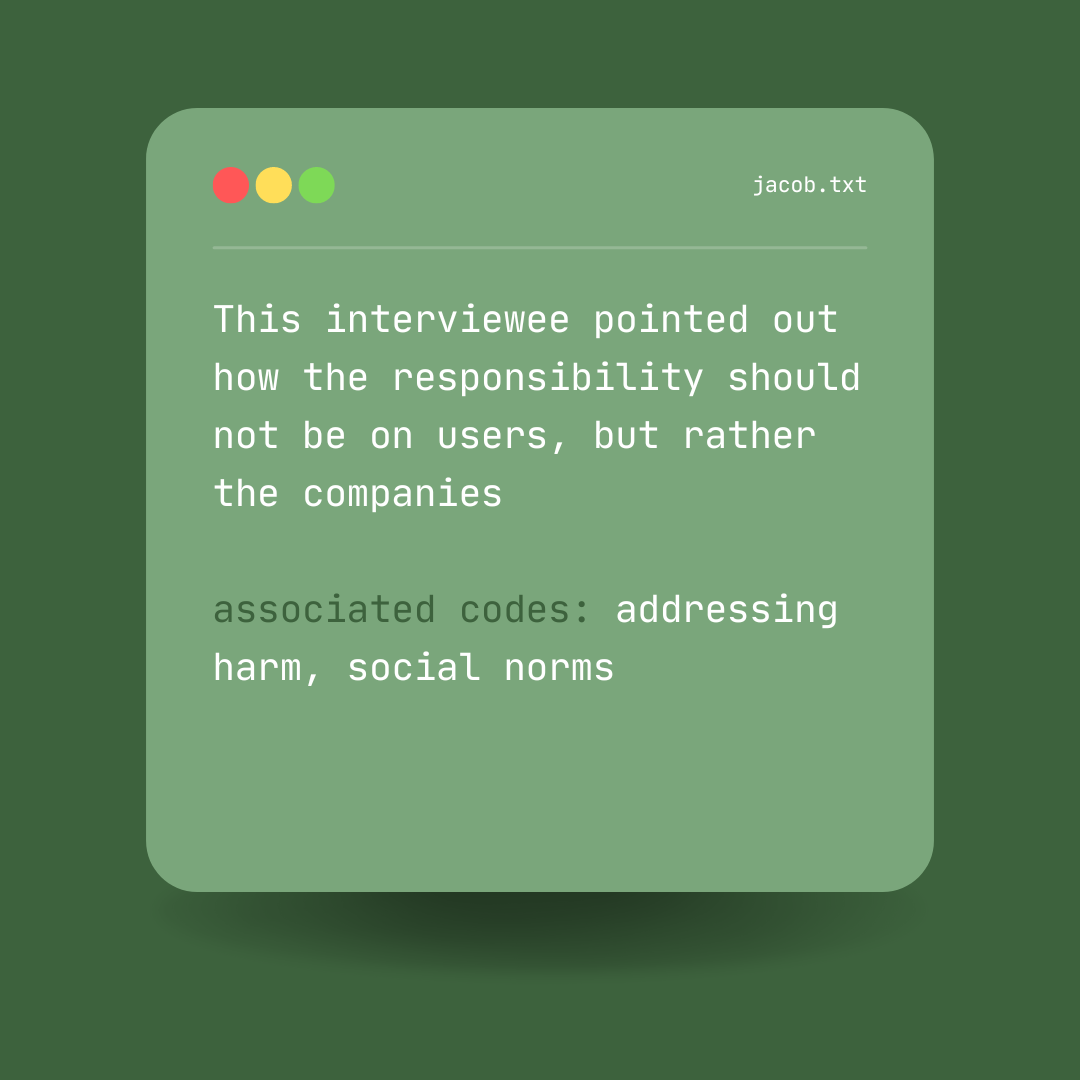Child Exposure & Safety on Social Media
by Jacob Tristeza
My research dived into Child Exposure and Safety on Social Media. As a young person myself who has seen firsthand the media that is shown towards minors on the internet, who often are granted uncontrolled access and are exposed to a wide array of content, from simple entertainment to harmful and inappropriate material. The internet, particularly social media, has become an integral part of daily life for many children and adolescents. However, the lack of adequate regulation and parental oversight often leads to youth encountering content that can negatively impact their mental health, privacy, and overall well-being. And so, I interviewed a social media expert and PhD candidate to examine the role of social media companies and even parents towards these risks, as well as the effectiveness of existing safety measures put in place.
reaching my target audience:
framing the conversation:
How effective is age verification in preventing children from accessing age-inappropriate social media?
Have you ever encountered an instance of this? How did the child interact with social media?
Are there legal policies that exist to protect minors on online platforms and are they effective? How can these be improved?
How can parents be involved with the protection of their children on social media without breaching a child’s private space?
Are there any regulations on AI when it comes to creating photos of minors?
I hope that this helps parents/guardians, educators, policymakers, and social media platforms. Parents and guardians need practical guidance on protecting their children online without invading their privacy and crossing boundaries, similarly educators can implement digital safety programs and recognize signs of online harm. Policymakers are responsible for creating updated and proper regulations to protect minors while social media platforms must keep proper environments and purposeful design codes geared towards safety.
our analysis
The prototype I made was a short infographic that helped users signify whether or not a post they were viewing was sponsored content. This related to the more user-friendly interface that made features accessible, instead of perhaps hiding certain features, as many users may not even know that they were being advertised to. One recommendation I have, to balance user privacy but also protection when it comes to youth, is a feature within these apps that allows the app to identify whether or not the user is a minor or not, turned on by the parents, without having to know specific personal information. This way, parents can safeguard their children and add protective boundaries, without social media companies gaining total access to their information nor the parent having constant access to their child’s online activities. This could lead to a different interface within the app, or perhaps lead the user to use a different app, such as Youtube vs. Youtube Kids, which provides a much better and kid-friendly option, without having to sacrifice user privacy!
If the product is free, you are the product!
In fact, TikTok generated $13.2 billion in advertising revenue worldwide in 2023. Such an industry caters to businesses who desire new customers, boosting sales in an app where global shopping trends are created...






